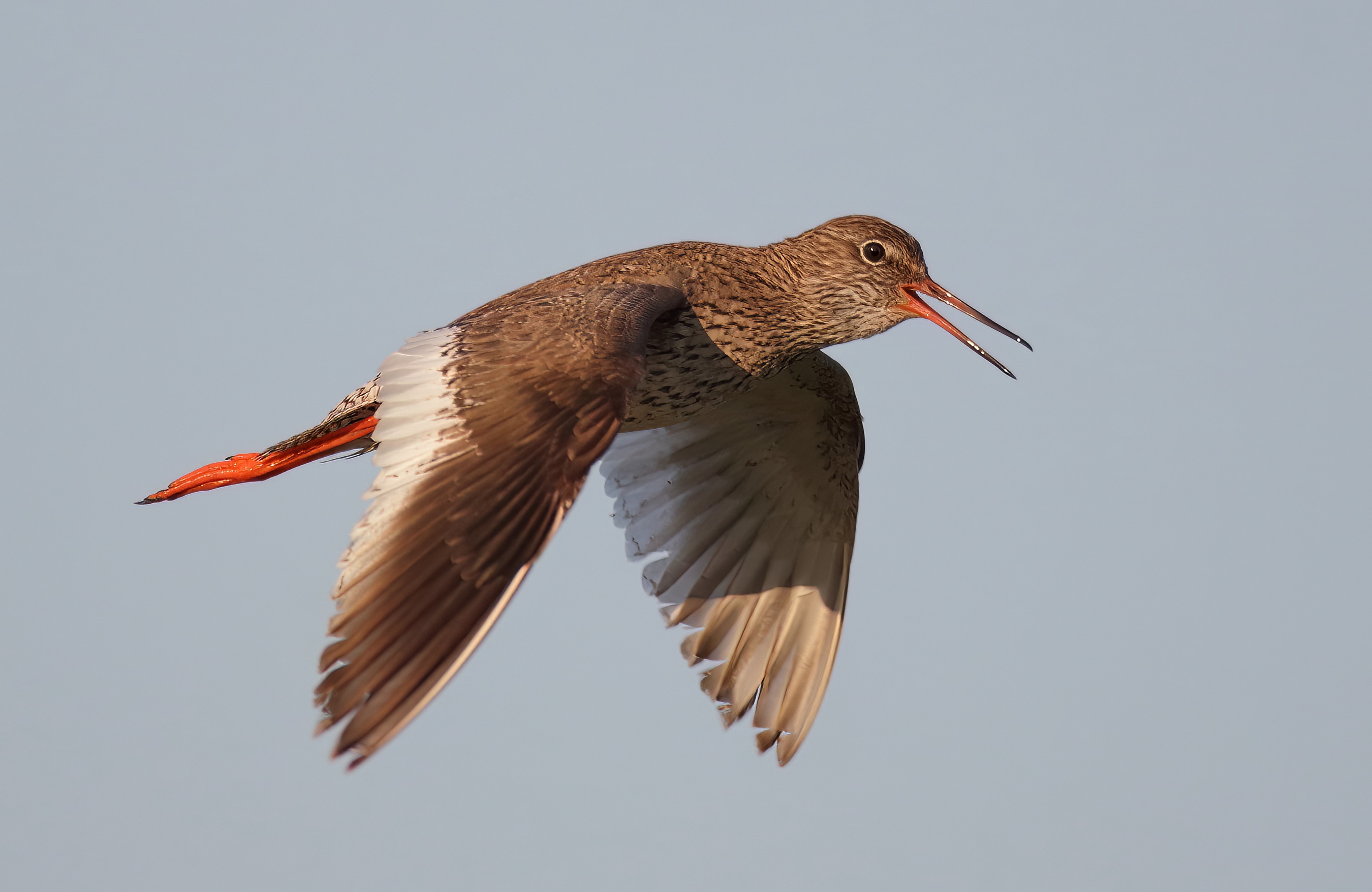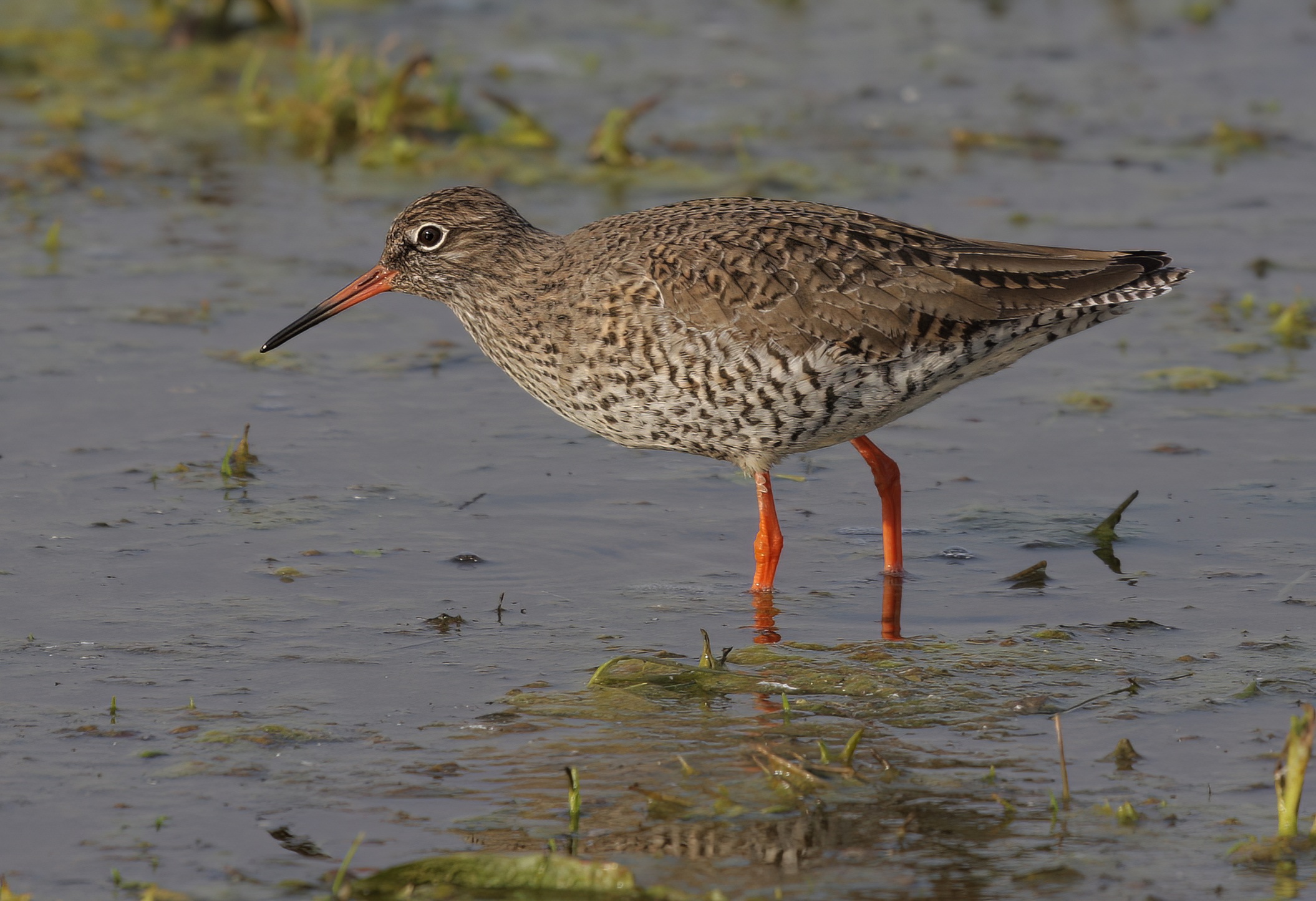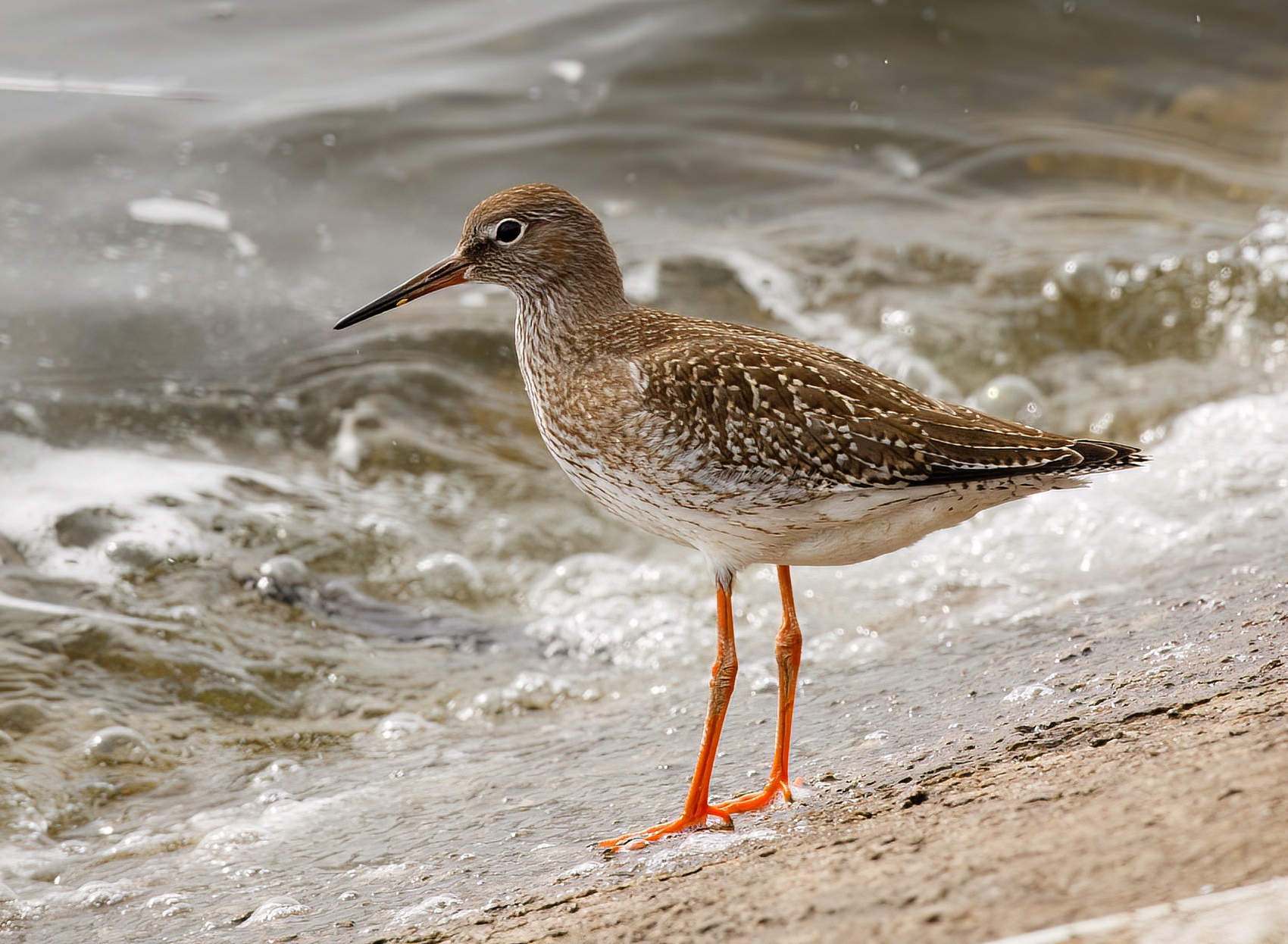Common Redshank Tringa totanus
Nominate British and continental form a common passage migrant and winter visitor and fairly common breeding species of coastal marshes. Scarce/very scarce inland. Icelandic form (robusta) a common passage migrant and winter visitor.



Two populations of Redshank use Lincolnshire coastline, those that breed in Iceland (race robusta) and those that breed in Britain and Scandinavia (race totanus). They are a common breeder on the saltmarsh in The Wash; some of these birds will remain year round, to be joined in winter by birds from further north. The “Sentinel of the Marsh” breeds widely on Lincolnshire saltmarshes. The Atlas estimated in the late 1980s there were 650 pairs on The Wash, 30-40 pairs on the upper Humber, 75 pairs at the Humber mouth and perhaps 30 pairs inland, a total population of nearly 800 pairs. The winter population was 3,000-4,000 birds. The BTO Atlas 2007-2011 showed some small net gains inland. There has been no full survey done recently so the current position is unknown. RSPB cover 3 key breeding areas at Tetney Marshes, Frampton Marsh and Freiston Shore. Over 6 years the total breeding pairs across these three sites fell from 326 in 2014 to 207 in 2019. The wintering population over the five years to 2018 based on peak monthly counts reported in LBR ranged from 3,700 in 2014 to 2,000 in 2018. The mean was around 3,000. Perhaps a little down over the 30 years since 1989. The long term 25-year trend to 2018/18 for wintering Redshank reported by WeBS is down 17%.
The Wash Wader Research Group (WWRG) started to flag Redshank in south Lincolnshire in late 2019. They are marked with white flags bearing three alphanumeric characters on the left tibia with a small white ring below the flag and an orange scheme marker on the right tibia. The aim is to monitor Redshank survival on The Wash, as not enough metal-ringed birds are recaptured to be able to get precise survival estimates. Secondaryily WWRG hope to get a better understanding of Redshank movements through the Wash in autumn, particularly juveniles looking for wintering sites.
Reference
Wash Wader Research Group website accessed November 10th 2022: https://wwrg.org.uk/species/redshank.
(Account as per new Birds of Lincolnshire (2021), included September 2022)
